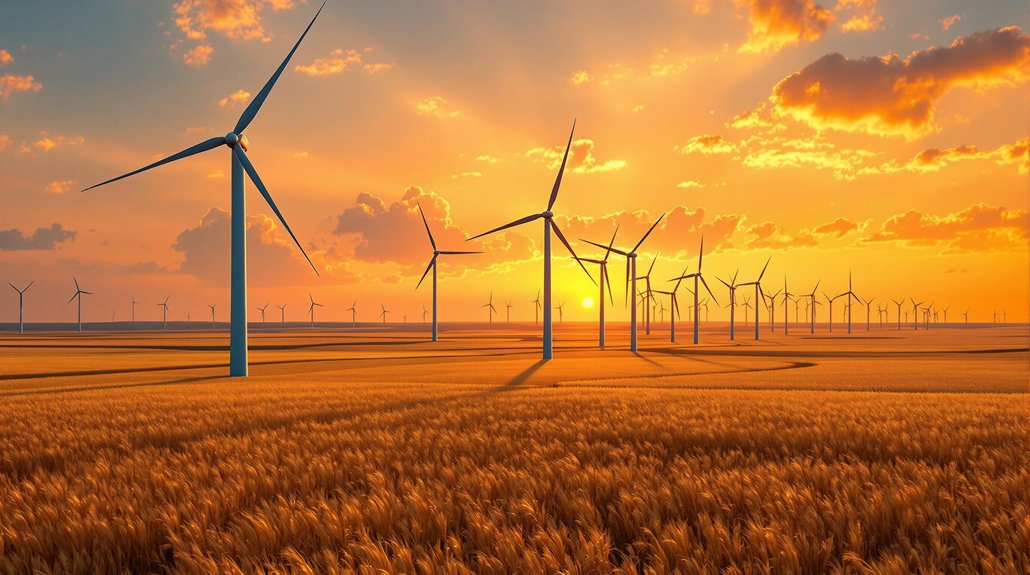Wind energy is crushing it globally, with a whopping 837 GW of installed capacity. China’s dominating with 338 GW, while the U.S. is playing catch-up at 154 GW. Modern turbines are absolute units – 210-foot blades spinning on 320-foot towers, converting 45% of wind to power. The industry employs 125,000 Americans and saves millions of tons of CO2. Sure, some birds aren’t fans, but with wind potentially supplying 35% of global electricity by 2050, this party’s just getting started.

Powerhouse China isn’t messing around when it comes to wind energy. With a staggering 338 GW of installed capacity in 2021, they’re leaving other nations in their dust. And they’re not slowing down – China accounted for 60% of global wind generation growth in 2023. Talk about showing off. The massive Gansu Wind Farm features 7000 turbines in operation.
The numbers worldwide are pretty mind-blowing. Global wind power capacity hit 837 GW in 2021, and here’s the kicker – offshore wind alone could generate 18 times our current global electricity needs. That’s not just impressive; it’s borderline ridiculous. The U.S. is playing catch-up, expecting to reach 154 GW by the end of 2024, but at least they’re trying.
These aren’t your grandfather’s windmills anymore. Modern turbines are absolute giants, with blades stretching 210 feet long and towers soaring over 320 feet high. They’re getting more efficient too, converting up to 45% of wind into electricity. Not too shabby for giant fan blades spinning in the breeze. The wind industry generated 331,177 GWh of clean power in 2024.
The economic impact is impossible to ignore. The wind industry employs over 125,000 workers in the U.S. alone, with 450 manufacturing facilities scattered across the country. This renewable resource provides steady income for farmers and ranchers who lease their land for wind farms.
Europe’s not exactly sitting on their hands either, raising €33bn for new wind projects in 2024. And the prices? As low as 1.4 cents per kilowatt-hour. That’s practically giving it away.
Sure, there are some downsides. Birds and bats occasionally have unfortunate encounters with turbines, and some folks aren’t thrilled about the view. But compare that to the 118 million tonnes of CO2 saved in Europe in 2019, and suddenly those complaints seem a bit less pressing.
Plus, offshore wind farms are actually creating artificial reefs, giving marine life some fancy new digs.
Looking ahead, the future’s looking breezier than ever. Global offshore wind capacity is set to quadruple by 2030, and experts predict wind could supply 35% of global electricity by 2050.
Denmark’s already showing us how it’s done, generating nearly half their electricity from wind in 2021. Now that’s what you call putting your money where your mouth is.








